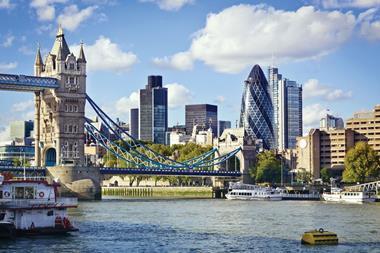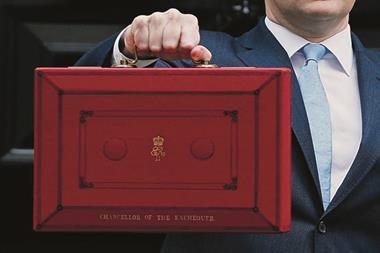“Sssss … [sound of breath being sucked through teeth] ‘oo put this in guvnor?” is likely to be oft-repeated across Whitehall departments this week. “Errr… Carillion.” “Thought as much. We can do it. But it’ll cost ya mate, sorry, minister.”

It is not just the taxpayer that is likely to be carrying the can following the spectacularly rapid and complete fall from grace of the construction, services and PFI conglomerate. If anything, the company’s less high-profile private clients could end up with half-built projects looking like the Mary Celeste.
The £5.2bn-turnover company collapsed under debts that can only be surmised. My estimate for the second half of 2017 was £1.15bn, extrapolated from the company’s own estimates, and half as much again in pension deficit. It now appears debt was worse, at £1.3bn, with only £29m in cash to pay the bills.
On Friday night, Carillion reacted to mounting speculation by stating it was “continuing to engage in constructive discussions” with financial and other stakeholders, which would involve a debt-for-equity swap that would “result in significant dilution to existing shareholders”. It also needed “additional short-term financing” and, again, the dialogue with banks was “constructive”.
Not constructive enough, however. Over the weekend, a flurry of leaks indicated they would only go forward if government stepped in with some form of backing.
The PM wasn’t for turning; the banks weren’t bluffing. Just before 7am on Monday, the company whose forebears re-fronted Buckingham Palace in 1850, invented Tarmacadam in 1901, helped bore the Channel Tunnel at the end of the last century and last year served up 32,000 school dinners was no more. I’m told by an insolvency practitioner that the choice of the almost-unheard-of first step of compulsory liquidation, rather than the administration, expected as a worst case, “suggests there is little if anything of value to be saved”.
So what of the projects Carillion is building or facilities it is running? The latter is of more pressing importance to a government already on the back foot, having awarded construction contracts as the profit warnings stacked up last year. Pupils and prisoners will be fed; the light bulbs may take longer to fix. But services contracts will be transferred to rivals or taken in-house, albeit at prices more grounded in commercial reality.
Transferring building contracts will probably take longer and prove more tortuous. Again, public-facing activities should command more of the government’s attentions. The problem with stalled sites is that anything that hasn’t been nailed down tends to disappear into the ether in days, along with otherwise-employable site management and the more solvent subcontractors.
With something of an overheated market in the north, the disruption may be especially acute and costly
A major chunk of Carillion’s output was in large-scale civil engineering-y work with modest exposure to office and residential work, certainly in London, so little risk of disruption there. It’s a different picture in the north, particularly Manchester. According to constructionenquirer.com, Carillion was working on the £75m Angel Gardens build-to-rent scheme for Moda and a similarly valued student halls for the University of Manchester. It was also a key partner on the Manchester City Airport commercial development. With something of an overheated market up there, the disruption may be especially acute and costly.
The aftershocks across the construction industry will probably go on longer if those subcontractors that have been just-about-managing so far succumb. There are hundreds of them and sadly, they’re some way down the pecking order. But they work for other clients; if they go under, delays, cost and penalties should spiral. This is the biggest collapse in UK construction history; it’s going to take a long time to clear up the mess.
Alastair Stewart is an equities analyst and commentator






























No comments yet